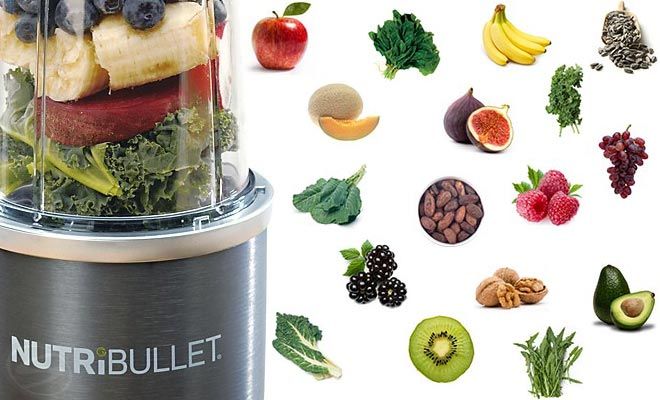The first food for baby
Feeding Your 4- to 7-Month-Old (for Parents)
Most babies this age are ready to try solid foods. Experts recommend starting solid foods when a baby is about 6 months old, depending on the baby's readiness and nutritional needs.
Be sure to check with your doctor before giving any solid foods.
Is My Baby Ready to Eat Solid Foods?
How can you tell if your baby is ready for solids? Here are a few hints:
- Does your baby swallow food or push it out of their mouth? Babies have a natural tongue-thrust reflex that pushes food back out. Wait until this reflex disappears (typically when babies are 4–6 months old).
- Can your baby support their own head? To eat solid food, an infant needs good head and neck control and should be able to sit up.
- Is your baby interested in food? Babies who stare, reach and grab, and open their mouths for food are ready to try solid foods.
If your doctor gives the go-ahead but your baby seems frustrated or uninterested in solid foods, try waiting a few days before trying again. Breast milk and formula will still meet nutritional needs as your baby learns to eat solid foods. But after 6 months, babies need the added nutrition — like iron and zinc — that solid foods provide.
Do not add cereal or other food to your baby's bottle because it can lead to too much weight gain.
Watch for signs that your child is hungry or full. Respond to these cues and let your child stop when full. A child who is full may suck with less enthusiasm, stop, or turn away from the breast or the bottle. With solid foods, they may turn away, refuse to open their mouth, or spit the food out.
How Should I Start Feeding My Baby Solid Foods?
When your baby is ready and the doctor says it’s OK to try solid foods, pick a time of day when your baby is not tired or cranky. You want your baby to be a little hungry, but not so hungry that they’re upset. So you might want to give your baby a little breast milk or formula first.
Have your baby sit supported in your lap or in a high chair with a safety strap.
Most babies' first food is iron-fortified infant single-grain cereal mixed with breast milk or formula. Place the spoon near your baby's lips, and let the baby smell and taste it. Don't be surprised if this first spoonful is rejected. Wait a minute and try again. Most food offered to your baby at this age will end up on the baby's chin, bib, or high-chair tray. Again, this is just an introduction.
When your little one gets the hang of eating cereal off a spoon, it may be time to try single-ingredient puréed meat, vegetables, or fruit. The order in which you give them doesn't matter, but go slow. Offer foods that are high in iron and zinc — such as meat, poultry, eggs, and beans — especially if your baby is breastfeeding. Try one food at a time and wait several days before trying something else new. This will let you identify any foods that your baby may be allergic to.
Which Foods Should I Avoid?
Foods that are more likely to cause allergies can be among the foods you introduce to your baby. These include peanuts, eggs, cow’s milk, seafood, nuts, wheat, and soy. Waiting to start these foods does not prevent food allergies. Talk to your doctor if you’re concerned about food allergies, especially if any close family members have allergies, food allergies, or allergy-related conditions, like eczema or asthma.
These include peanuts, eggs, cow’s milk, seafood, nuts, wheat, and soy. Waiting to start these foods does not prevent food allergies. Talk to your doctor if you’re concerned about food allergies, especially if any close family members have allergies, food allergies, or allergy-related conditions, like eczema or asthma.
Infants with severe eczema or egg allergies are more likely to have allergies to peanuts. Talk to your doctor about how and when to introduce these foods to your child.
Possible signs of food allergy or allergic reactions include:
- rash
- bloating or an increase in gassiness
- diarrhea
- vomiting
Get medical care right away if your baby has a more severe allergic reaction, like hives, drooling, wheezing, or trouble breathing.
If your child has any type of reaction to a food, don't offer that food again until you talk with your doctor.
Babies shouldn't have:
- foods with added sugars and no-calorie sweeteners
- high-sodium foods
- honey, until after the first birthday.
 It can cause botulism in babies.
It can cause botulism in babies. - unpasteurized juice, milk, yogurt, or cheese
- regular cow's milk or soy beverages before 12 months instead of breast milk or formula. It’s OK to offer pasteurized yogurt and cheese.
- foods that may cause choking, such as hot dogs, raw carrots, grapes, popcorn, and nuts
Tips for Feeding Your Baby Solid Foods
With the hectic pace of family life, most parents try commercially prepared baby foods at first. They come in small, convenient containers, and manufacturers must meet strict safety and nutrition guidelines.
If you prepare your own baby foods at home, here are some things to keep in mind:
- Follow the rules for food safety, including washing your hands well and often.
- To preserve the nutrients in your baby's food, cook it in ways that keep the most vitamins and minerals. Try steaming or baking fruits and vegetables instead of boiling, which washes away the nutrients.
- Freeze portions that you aren't going to use right away.

- Whether you buy the baby food or make it yourself, texture and consistency are important. At first, babies should have finely puréed single-ingredient foods. (Just applesauce, for example, not apples and pears mixed together.)
- After your baby is eating individual foods, it's OK to offer a puréed mix of two foods. As babies get older, they will learn to eat a greater variety of tastes and textures.
- If you use prepared baby food in jars, spoon some of the food into a bowl to feed your baby. Do not feed your baby right from the jar — bacteria from the baby's mouth can contaminate the remaining food. If you refrigerate opened jars of baby food, it's best to throw away anything not eaten within a day or two.
- Around 6 months of age is a good time for your baby to try a cup. You might need to try a few cups to find one that works for your child. Use water at first to avoid messy clean-ups. Do not give juice to infants younger than 12 months.
Over the next few months, introduce a variety of foods from all the food groups.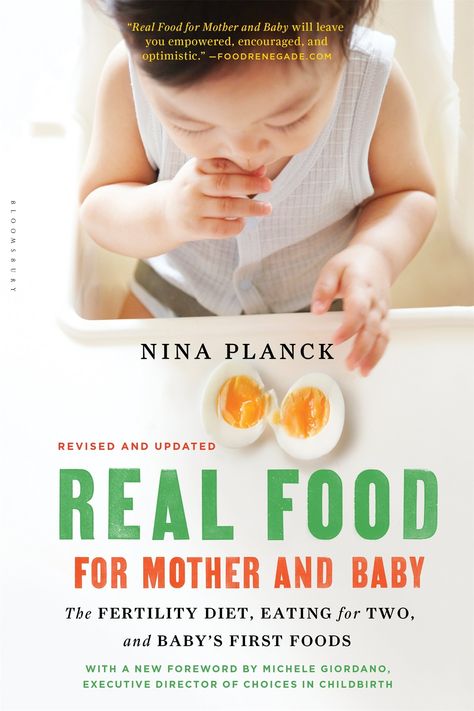 If your baby doesn't seem to like something, don’t give up. It can take 8 to 10 tries or more before babies learn to like new foods.
If your baby doesn't seem to like something, don’t give up. It can take 8 to 10 tries or more before babies learn to like new foods.
When, What, and How to Introduce Solid Foods | Nutrition
For more information about how to know if your baby is ready to starting eating foods, what first foods to offer, and what to expect, watch these videos from 1,000 Days.
The Dietary Guidelines for Americans and the American Academy of Pediatrics recommend children be introduced to foods other than breast milk or infant formula when they are about 6 months old. Introducing foods before 4 months old is not recommended. Every child is different. How do you know if your child is ready for foods other than breast milk or infant formula? You can look for these signs that your child is developmentally ready.
Your child:
- Sits up alone or with support.
- Is able to control head and neck.
- Opens the mouth when food is offered.
- Swallows food rather than pushes it back out onto the chin.

- Brings objects to the mouth.
- Tries to grasp small objects, such as toys or food.
- Transfers food from the front to the back of the tongue to swallow.
What Foods Should I Introduce to My Child First?
The American Academy of Pediatrics says that for most children, you do not need to give foods in a certain order. Your child can begin eating solid foods at about 6 months old. By the time he or she is 7 or 8 months old, your child can eat a variety of foods from different food groups. These foods include infant cereals, meat or other proteins, fruits, vegetables, grains, yogurts and cheeses, and more.
If your child is eating infant cereals, it is important to offer a variety of fortifiedalert icon infant cereals such as oat, barley, and multi-grain instead of only rice cereal. Only providing infant rice cereal is not recommended by the Food and Drug Administration because there is a risk for children to be exposed to arsenic. Visit the U. S. Food & Drug Administrationexternal icon to learn more.
S. Food & Drug Administrationexternal icon to learn more.
How Should I Introduce My Child to Foods?
Your child needs certain vitamins and minerals to grow healthy and strong.
Now that your child is starting to eat food, be sure to choose foods that give your child all the vitamins and minerals they need.
Click here to learn more about some of these vitamins & minerals.
Let your child try one single-ingredient food at a time at first. This helps you see if your child has any problems with that food, such as food allergies. Wait 3 to 5 days between each new food. Before you know it, your child will be on his or her way to eating and enjoying lots of new foods.
Introduce potentially allergenic foods when other foods are introduced.
Potentially allergenic foods include cow’s milk products, eggs, fish, shellfish, tree nuts, peanuts, wheat, soy, and sesame. Drinking cow’s milk or fortified soy beverages is not recommended until your child is older than 12 months, but other cow’s milk products, such as yogurt, can be introduced before 12 months. If your child has severe eczema and/or egg allergy, talk with your child’s doctor or nurse about when and how to safely introduce foods with peanuts.
If your child has severe eczema and/or egg allergy, talk with your child’s doctor or nurse about when and how to safely introduce foods with peanuts.
How Should I Prepare Food for My Child to Eat?
At first, it’s easier for your child to eat foods that are mashed, pureed, or strained and very smooth in texture. It can take time for your child to adjust to new food textures. Your child might cough, gag, or spit up. As your baby’s oral skills develop, thicker and lumpier foods can be introduced.
Some foods are potential choking hazards, so it is important to feed your child foods that are the right texture for his or her development. To help prevent choking, prepare foods that can be easily dissolved with saliva and do not require chewing. Feed small portions and encourage your baby to eat slowly. Always watch your child while he or she is eating.
Here are some tips for preparing foods:
- Mix cereals and mashed cooked grains with breast milk, formula, or water to make it smooth and easy for your baby to swallow.

- Mash or puree vegetables, fruits and other foods until they are smooth.
- Hard fruits and vegetables, like apples and carrots, usually need to be cooked so they can be easily mashed or pureed.
- Cook food until it is soft enough to easily mash with a fork.
- Remove all fat, skin, and bones from poultry, meat, and fish, before cooking.
- Remove seeds and hard pits from fruit, and then cut the fruit into small pieces.
- Cut soft food into small pieces or thin slices.
- Cut cylindrical foods like hot dogs, sausage and string cheese into short thin strips instead of round pieces that could get stuck in the airway.
- Cut small spherical foods like grapes, cherries, berries and tomatoes into small pieces.
- Cook and finely grind or mash whole-grain kernels of wheat, barley, rice, and other grains.
Learn more about potential choking hazards and how to prevent your child from choking.
Top of Page
Baby's first meal
Victoria Levchuk© Baby's first meal What is baby's first meal? Breast milk/adapted formula or solid food? Let's try to understand this issue.
Breast milk or formula is given to a child for about the first six months of his life, it is very difficult to attribute these products to food, because it is both food and drink for the child at the same time. Although, with artificial feeding, the child is supplemented with water so that there is no constipation, since the mixture is more high-calorie than breast milk and cannot adapt to the current needs of the child. Traditionally, when they say the first meal of a child, they mean solid food or complementary foods. nine0005
Many mothers wonder when and how to start complementary feeding. Most mothers face very different opinions from pediatricians about when to start complementary foods and what foods to start with. Baby's first meal has been a hot topic of discussion lately.
And baby food labels often mislead parents: “From the fourth month, from the fifth month…”
Complementary foods The World Health Organization, based on the latest research in this area, recommends exclusive breastfeeding for the first six months. From the beginning of the seventh month, you can start introducing solid foods into complementary foods. nine0005
From the beginning of the seventh month, you can start introducing solid foods into complementary foods. nine0005
Continued breastfeeding is recommended at least until the end of the first year and for as long as mother and child wish.
Signs that the baby is ready for complementary foods, starting from the sixth month, are the child's interest in food from the common table, an increased need for food that does not go away even if the baby often breastfeeds, and other signs that are described in more detail here.
If the baby is at increased risk of developing allergies, for example when one or both parents have allergies, it is very important not to start complementary foods before the sixth month and unless the baby shows signs of being ready to wean. nine0005
Milk, dairy products and egg whites should generally be avoided during the first year, whether or not the parents are allergic, as they are a source of foreign proteins that can lead to allergies.
It is very important to pay attention to the sources of "hidden" dairy products, many baby food manufacturers add them to baby purees and cereals.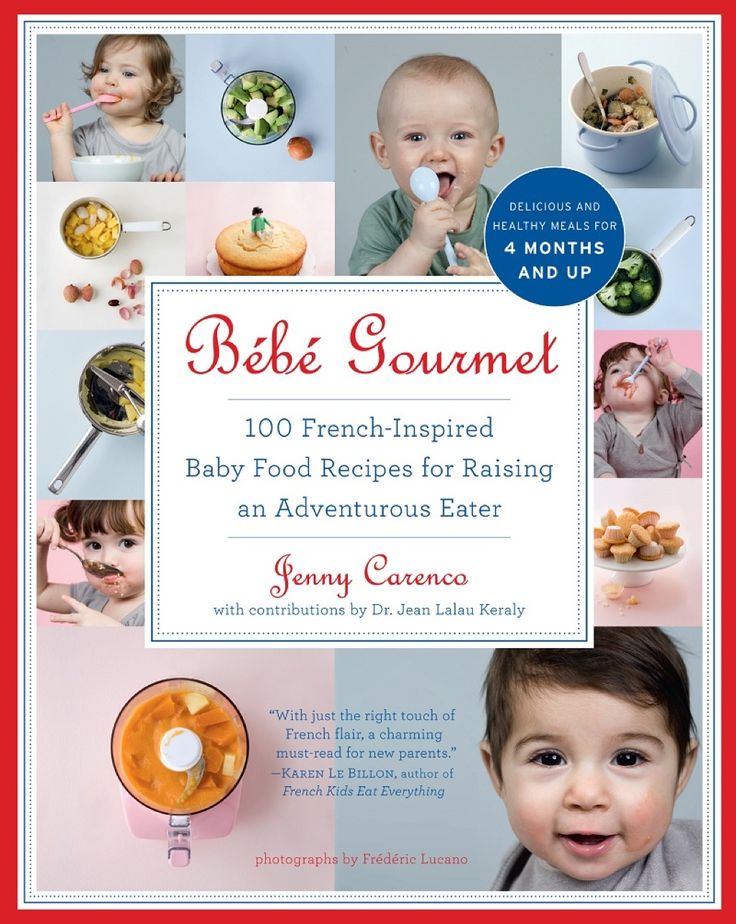
Boiled egg yolk can be given from 10-12 months of age. It would be useful to introduce fish into the complementary foods of a child after 10 months, but closer to 12 months. Vegetables that are moderately allergic are best introduced into complementary foods for a child after a year. It is also better to start giving fish and meat broths after 12 months. nine0005
Sunflower oil can be used instead of olive oil (possible kidney damage).
It is also important to limit the amount of sugar in baby food. The first meal of the child does not provide sugar and salt. Sugar only provides the child with empty calories, and reduces the appetite for other nutritious foods. The habit of eating with too much or too little sugar or salt is born during the introduction of complementary foods.
By limiting the amount of sugar or salt in the child's diet now, parents help the child eat less sweets and salty, and therefore eat more balanced foods in the future, thereby protecting him from diabetes and obesity! nine0005 first complementary foods
There is no rule governing the order in which each dietary group is included in a child's diet. Depending on the needs of the child and circumstances, certain foods are introduced, in other cases it is preferable to start complementary foods with cereal porridge or vegetable puree. The only things that are "off" in a child under one year old are honey (risk of botulism), salt (may cause kidney problems), sugar (risk of obesity) and whole cow's milk because it provides a high protein load on the kidneys. All other products parents can give the child after 6 months. nine0005
Depending on the needs of the child and circumstances, certain foods are introduced, in other cases it is preferable to start complementary foods with cereal porridge or vegetable puree. The only things that are "off" in a child under one year old are honey (risk of botulism), salt (may cause kidney problems), sugar (risk of obesity) and whole cow's milk because it provides a high protein load on the kidneys. All other products parents can give the child after 6 months. nine0005
The main thing is to try every new food for some time to see if the baby reacts to it, if there is an allergy. Approximately the first 10 products are introduced into complementary foods for about 4-7 days each, and then for 3-5 days. But to follow the rule of waiting or not, the decision of the parents themselves, consultation of the pediatrician is obligatory. Parents do not refuse products that the child has already tried, a full-fledged balanced menu for the child is gradually being formed from them.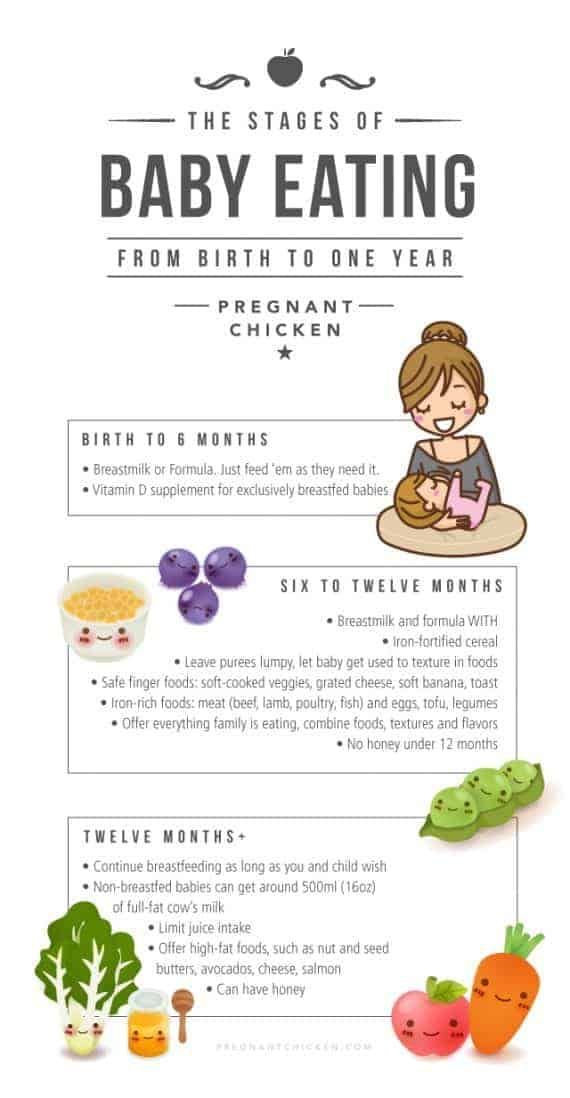
It is also important to note that the introduction of foods into a child's complementary foods depends on from seasonality , for example, it is better to start feeding with fresh vegetables, in their growing season. The area of residence and traditions also play a role in the introduction of complementary foods, for example, if in America they start complementary foods with avocados or mangoes, for them these products are always sold fresh, the whole family traditionally eats them and is not going to refuse them. It’s a little inappropriate for us to start complementary foods with avocados and mangoes, these products are imported and how they were brought to the consumer, whether they were treated with chemicals for ripeness and preservation, is not known, so it’s better to use zucchini or an apple that grows in the nearest village or farm. nine0005
It is also important to consider the tastes and preferences of the whole family and the mother personally , since the example of a mother is more important than a thousand offered plates, if a mother, offering mashed potatoes, twists her face, or shows a negative attitude towards food, then the child most likely will not try it. For the most part, this is a defense mechanism created by nature. If at the initial stage you can introduce the baby to zucchini, broccoli and cauliflower, because it is healthy, hypoallergenic, then later, when the diet expands, you should think many times before offering things not used by the family instead of the main important foods. It makes sense to introduce the whole family to lentils and feed them once every three weeks, but it makes no sense to introduce them into complementary foods for a child, and never eat them ourselves. nine0005
For the most part, this is a defense mechanism created by nature. If at the initial stage you can introduce the baby to zucchini, broccoli and cauliflower, because it is healthy, hypoallergenic, then later, when the diet expands, you should think many times before offering things not used by the family instead of the main important foods. It makes sense to introduce the whole family to lentils and feed them once every three weeks, but it makes no sense to introduce them into complementary foods for a child, and never eat them ourselves. nine0005
Therefore, many products introduced into complementary foods for a child should appear on the adult table periodically, parents show an example of the use of these products. As I wrote and will write, if it doesn’t taste good to you, then there simply wasn’t a way to prepare this product.
Ready-made commercial cans have the advantage that they are generally well controlled by the government and are made from pure ingredients. However, they are practical and quick to use, especially when helpers are not available, which is why many mothers prefer them for their baby's first meal. nine0005
nine0005
However, they are also very expensive and another disadvantage is that they often contain many different ingredients and are not suitable for the gradual introduction of solid foods.
Another option is to make your own baby food, boil vegetables and fruits and grind them in a blender. It is important here that the ingredients come from a controlled ecological culture and are as pure and fresh as possible.
Whichever option parents choose, remember: there are many products on the market that are not needed for complementary foods for the first three years of life, such as chocolate products! It requires attention and critical thinking. nine0005
A child's first meal is an important gift that will be useful for the rest of his life, the first step towards a healthy diet rich in discoveries and tastes.
Menu for a 1 year old child for a week, rules and recipes
Menu author: Natalia Dik — pediatrician.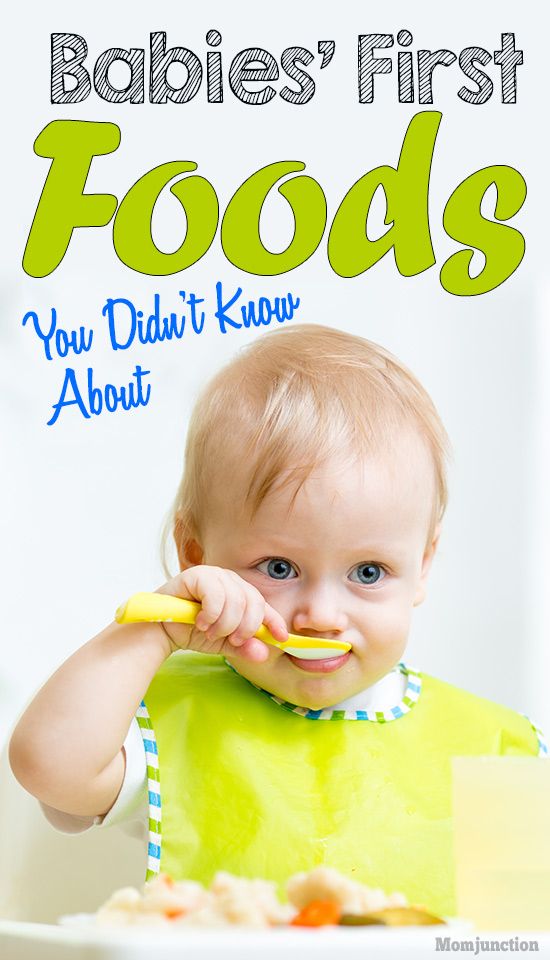 She graduated from the Chelyabinsk Medical Academy, clinical internship and residency, specialty pediatrics. She has been working in her specialty since 2007, from 2005-2008 she has been the head of the Allergy Department of the City Clinical Hospital No. 1 of Chelyabinsk, since 2008 she has been a specialist in clinical trials of drugs. She enjoys cooking and practices the Menu of the Week system in her daily life. nine0003 She graduated from the Chelyabinsk Medical Academy, clinical internship and residency, specialty pediatrics. She has been working in her specialty since 2007, from 2005-2008 she has been the head of the Allergy Department of the City Clinical Hospital No. 1 of Chelyabinsk, since 2008 she has been a specialist in clinical trials of drugs. She enjoys cooking and practices the Menu of the Week system in her daily life. nine0003 |
What food should be on the child's menu after the first birthday? Perhaps there is no mother who would not ask herself this question at least once.
The baby more and more confidently eats not only pureed dishes, but also dishes with small pieces of food, his diet at 1 year old gradually expands, the menu becomes more diverse and as a result, the mother has a lot of opportunities for culinary experiments.
It is possible and necessary to experiment, because it is at an early age that a child develops eating habits . You don't want him to turn his nose away from a plate of food in the future because it contains fried onions or baked broccoli, do you? Then start introducing him to a variety of products and how to cook them now!
You don't want him to turn his nose away from a plate of food in the future because it contains fried onions or baked broccoli, do you? Then start introducing him to a variety of products and how to cook them now!
Things to remember when compiling a menu for a child after 1 year:
- First of all, try to follow the same feeding schedule for better production of digestive enzymes . It is recommended to give "adult" food to babies 5 times a day at intervals of 3.5-4 hours: breakfast, lunch, afternoon snack, dinner and milk or kefir at night. It is very good if the mother's lactation is preserved, and it is possible to continue natural feeding on demand. Usually, children ask for a breast in the morning after waking up, in the afternoon after taking regular meals, or in between and before bedtime. With artificial feeding, babies usually continue to drink formula milk in the morning and before bedtime after a year. nine0089
- Diversifying the diet of is easy: just include vegetables, fruits, cereals, protein products (milk and dairy products, legumes, meat, fish) and fats (vegetable, butter, sour cream) in it every day.
 For example, if there was a cereal side dish for lunch, it is better to cook a vegetable dish for dinner, and vice versa.
For example, if there was a cereal side dish for lunch, it is better to cook a vegetable dish for dinner, and vice versa. - The most optimal ways of cooking are stewing, boiling (in water or steam), baking. But there are some peculiarities: if you cook soup in broth, it is better to use boneless meat and drain the first broth to avoid overstimulation of digestive enzymes
- You can gradually introduce children to various spices and seasonings (cinnamon, coriander, cumin, etc.). Of course, a lot of spicy additives (pepper, garlic) are best avoided, as well as products with artificial flavors (seasonings containing monosodium glutamate, etc.). It will be more useful if the baby learns to enjoy natural tastes.
- All mothers are well aware that water is very important for the health and well-being of babies, so make sure that your child drinks enough water between feedings (in extreme cases, unsweetened tea or a decoction of herbs, rose hips).
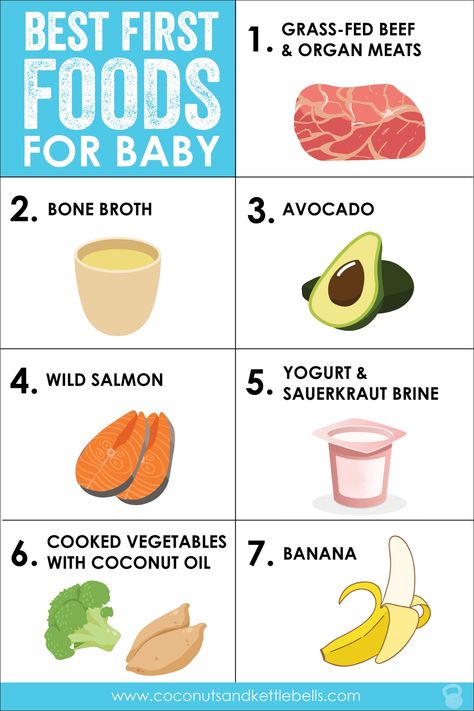 You can pour water every morning into a sippy cup or bottle in a volume of about 300 ml and periodically offer him a drink. nine0089
You can pour water every morning into a sippy cup or bottle in a volume of about 300 ml and periodically offer him a drink. nine0089
MONDAY
Breakfast: Wheat porridge
Lunch: Pumpkin puree soup recipe with chicken
Dinner: Zucchini and carrot casserole
Pediatrician's comment:lunch often offers to cook broth and stewed vegetables. In my opinion, puree soups combine two dishes at the same time, thereby saving time on cooking. Complementing them with steam cutlets or meatballs (from meat, poultry or fish), we get a full meal. nine0003
|
TUESDAY
Breakfast: Oatmeal Porridge with Caramel Apples
Lunch: Broccoli Soup, Fish Meatballs
Dinner: Zucchini and Carrot Casserole
Pediatrician's comment: For afternoon snack you can give your baby fruit (if there are still problems with pieces, then in the form of puree or grated), cottage cheese, yogurt or kefir with children's cookies. |
Wednesday
breakfast: Puding from cottage cheese
Lunch: Broccoli soup
Dinner: buckwheat 9000
Pediatrician's comment:
Many children even a year prefer to have breakfast with breast milk or formula (if they are bottle-fed). Dairy porridge has always been considered a tasty and satisfying breakfast. In addition, you can cook cottage cheese casserole or scrambled eggs. nine0003
Thursday
breakfast: omelet
Lunch: soup puree from various vegetables, cutlets
Dinner: buckwheat porridge
Pediatrician's comment: For dinner many children have enough porridge or vegetable puree. |

 nine0003
nine0003 






